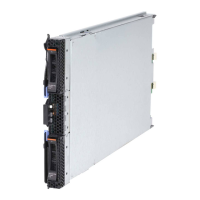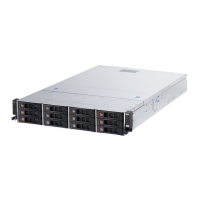Potential conflicts with the LAN over USB interface
In some situations, the IMM LAN over USB interface can conflict with certain
network configurations, applications, or both.
In some situations, the IMM LAN over USB interface can conflict with certain
network configurations, applications, or both. For example, Open MPI attempts to
use all of the available network interfaces on a server. Open MPI detects the IMM
LAN over USB interface and attempts to use it to communicate with other systems
in a clustered environment. The LAN over USB interface is an internal interface, so
this interface does not work for external communications with other systems in the
cluster.
Resolving conflicts with the IMM LAN over USB interface
Use this information to resolve LAN over USB conflicts with network
configurations and applications.
There are several actions that resolve LAN over USB conflicts with network
configurations and applications:
1. For conflicts with Open MPI, configure the application so it does not attempt to
use this interface.
2. Take the interface down (run ifdown under Linux).
3. Remove the driver (run rmmod under Linux).
4. Disable the USB in-band interface on the IMM through either the IMM Web
interface or the AMM Web interface.
Important: If you disable the USB in-band interface, you cannot perform an
in-band update of the IMM firmware using the Linux or Windows flash
utilities. If the USB in-band interface is disabled, use the Firmware Update
option on the IMM Web interface to update the firmware.
If you disable the USB in-band interface, also disable the watchdog timeouts to
prevent the server from restarting unexpectedly.
v Use the following steps to disable the LAN over USB interface from the IMM
Web interface.
a. Log in to the IMM on which you want to disable the USB device driver
interface.
b. In the navigation pane, click System Settings and scroll down to the
Miscellaneous area.
c. Select the Do not allow commands on USB interface check box to
disable the USB in-band interface. Selecting this option does not affect the
USB remote presence functions (for example, keyboard, mouse, and mass
storage). When you disable the USB in-band interface, the in-band
systems-management applications such as the Advanced Settings Utility
(ASU) and firmware update package utilities might not work.
Note: The ASU works with a disabled USB in-band interface if an IPMI
device driver is installed.
If you try to use systems-management applications while the in-band
interface is disabled, they might not work.
d. Click Save.
v Use the following steps to disable the LAN over USB interface from the
Advanced Management Module (AMM) Web interface:
Chapter 4. Configuring the blade server 65

